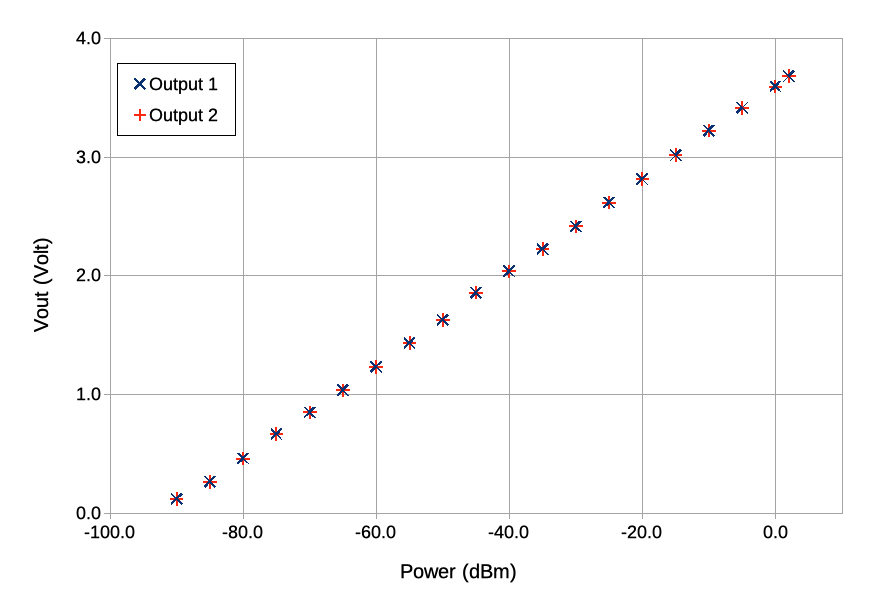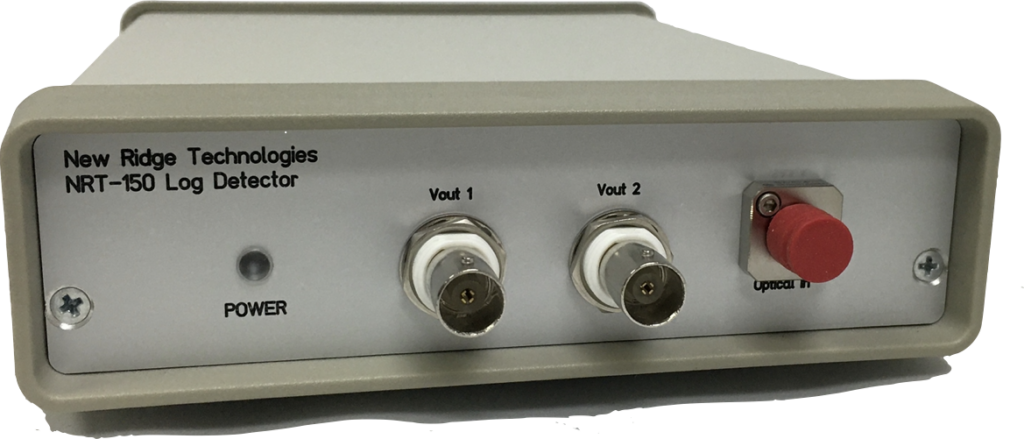Overview
We initially developed the NRT-150 to help customers using the NRT-2500 or NRT-250 for Tracker applications, specifically when trying to track to a minimum light level. This problem is challenging. On one hand the goal is to minimize the number of photons, yet you need photons to generate a reliable Tracker feedback signal. With a (normal) linear photodiode amplifier, the voltage gets too small to track as minimization darkens the output. Using the NRT-150 log amplifier ‘compresses’ the high power voltage output and ‘expands’ the voltage output at lower optical power.
We have redesigned the NRT-150 to take advantage of newer log amplifier designs with more dynamic range and much faster response. Below is an example of the new NRT-150 log detector, over 9 decades of detected optical power, from both analog outputs.

Key Specifications
- Calibrated from < -90 dBm to >0 dBm.
- Response greater than 4 MHz
- Dual buffered analog (BNC) voltage outputs
- Compact size
User Manual
Surprise! There is no user manual. Here is all you need to operate the NRT-150 log detector.
- Plug in the NRT-150 to the DC power supply.
- Turn it on.
- Connect the optical power.
- Read/output analog voltages from the BNCs as feedback for NRT Acquirer or NRT Tracker. Or monitor on a digital voltmeter or oscilloscope, etc.
The conversion of optical power to voltage is supplied with each unit, calibrated from above 0 dBm to below -90 dBm. The approximate conversion is Vout = 0.039 × Optical Power [dBm] + 3.581 , a fit to the representative data from the table below.
| Optical Power [dBm] | Voltage [example] |
| 0.0 | 3.578 |
| -10.0 | 3.208 |
| -20.0 | 2.802 |
| -30.0 | 2.407 |
| -40.0 | 2.039 |
| -50.0 | 1.637 |
| -60.0 | 1.226 |
| -70.0 | 0.853 |
| -80.0 | 0.449 |
| -90.0 | 0.120 |
If you need more information or have other questions, please contact us at New Ridge Technologies:
[email protected] or call: +1-410-753-3055

